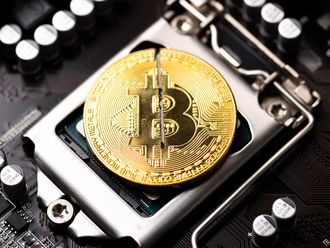In recent months, there has been a lot of buzz around blockchain, with Dubai stating its aspiration to become the world’s first blockchain-powered government by 2020. However, much confusion still surrounds the technology.
Blockchain initially rose to prominence as the open source component of bitcoin, making it possible to conduct secure, trusted exchanges of the virtual currency.
And despite some of the negative perceptions that surround bitcoin itself, the ability to manage the exchange of value without trusted intermediaries has led many commentators to speculate about the potential for far wider use.
But first, let’s start with the basics. Blockchain works by creating a unique hash for each transaction, and a distributed set of servers validate the transaction by validating that hash.
The transaction has a complete history attached to it (i.e., the ‘chain’ in ‘blockchain’) — imagines your paper currency could tell you every transaction it had ever been involved in.
Database
At the highest level, the blockchain is a searchable ledger or database where transactions, interactions, and so forth can be validated by a network of computers working to perform complex cryptographic functions.
Each part of the network maintains a copy of the database. For new transactions, a new block is created, added to the chain, and broadcast to the other parts of the network.
Blockchains are designed to ensure that transactions can be recorded and linked with the additional properties of nonrepudiation and modification detection.
In summary, it is a self-forming trusted-party validator that does not require a trusted intermediary like a lawyer, government body, or financial institution.
Challenges
The potential for widespread disruption of traditional industries is clear, and the financial services sector is an obvious place to start. However, there are a number of challenges that must be overcome before blockchain can be more broadly applied.
The latency in resolving transactions is too high, while performance risk has also been a contentious issue, with concerns persisting around the technology’s ability to scale.
These concerns are due to the computational requirements associated with proving absolute authenticity of the blockchain database, a process referred to as a ‘proof of work’.
Changing records in the blockchain (e.g., adding a new block) requires redoing the proof of work and a significant amount of computing resources.
Proofs of work are secured via the cryptographic hashes that ensure their authenticity, and these have so far proven expensive to maintain with specialised processors that consume considerable amounts of power.
Use cases
Within the financial services sector, blockchain technology addresses serious issues relating to the delayed settlement of funds that are inherent in most payment networks.
Such issues impose costs on users looking to either speed up settlement or mitigate risks as the funds are in transit; but with near-real-time settlement, and the ledger itself verifying transactions, blockchains eliminate these costs completely.
Beyond payments, blockchain technology could help automate trading, settlement, and clearing; reduce costs; and alter how financial firms compete over a range of asset classes.
Firms can also establish use cases where secure distributed ledgers can share data and improve transaction monitoring and reporting for compliance, such as know your customer (KYC) and anti — money laundering (AML) programs.
Smart contracts
Many financial firms are looking to distributed ledgers technology (DLT) and smart contracts as a way of reducing post-trade settlement time, improving liquidity, enhancing compliance recordkeeping, and providing a platform for delivering new products and services.
While some types of smart contracts are already in use today, the focus is often on the issuance and transferal of credit (e.g., debt). But these typically do not guarantee the performance of counterparties and can be vulnerable to fraud.
It can also be difficult to facilitate monetary transactions with smart contracts because the programming code is virtual while the cash and funds being transferred are physical assets.
Under such circumstances, blockchain technology would appear to be the perfect fit, as it overcomes many of these drawbacks and enables the exchange of money, property, shares, or anything of value in a transparent, conflict-free manner.
That said, concerns about fraud and data security have slowed the adoption of smart contracts, and multiple industry regulations have prevented digital currency from being used in programmable and smart contracts, so further tweaks will inevitably be needed.
It’s still early days but blockchain technology will become central to the way transactions are performed in the future, which is why the intermediaries we have all traditionally relied upon are now actively evaluating what the rise of blockchain solutions means for their existing business models.
The columnist is group vice-president and regional managing director for the Middle East, Africa and Turkey at global ICT market intelligence and advisory firm International Data Corporation (IDC). He can be contacted via Twitter @JyotiIDC. Content for this week’s feature leverages global, regional, and local research studies undertaken by IDC.











